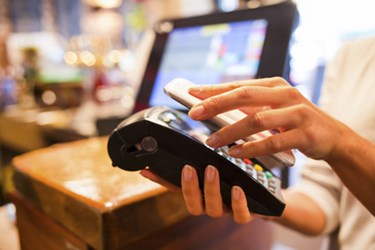Retail IT News For VARs — March 11, 2014

By Anna Rose Welch, Editorial & Community Director, Advancing RNA

The MasterCard Mobile Payments Study finds 80 percent of merchants believe they would be at a disadvantage by not adopting a mobile payment option. In other news, solutions providers who deal with SMBs are reminded mobile management hasn’t kept up with adoption of mobile apps, and the apparel industry could offer a new market for QR code systems.
Mobile Payment: Merchants See Importance Of Adoption
The second annual MasterCard Mobile Payments Study found that merchants, business owners, and consumers have taken to social media to voice their interest in mobile payments. A total of 13 million social media conversations have been about the acceptance of mobile payments. Of the merchants participating in the study, 88 percent have voiced their approval of mobile payments and say that it would be a disadvantage to not adopt a mobile payment option. Coming out of 2013, it is becoming clear that the conversation has shifted from “why use mobile payments?” to “which mobile payment option should be used?”
Mobile Management A Key Priority For Your Clients
The VAR Guy discusses some of the needs SMEs have as they leverage mobile solutions more regularly. According to research from the SMB Group, mobile management has not kept up with the rapid adoption of mobile apps and solutions in businesses. Security, manageability, ease-of-use, and costs are some of the concerns businesses have about their mobile solutions. Vendors should ensure that applications are user-friendly and well-designed, and a user interface (UI) must be well-designed and must be able to keep up with the growth of a business.
New Market For QR Codes In Apparel Industry?
According to The Guardian, the Sustainable Apparel Coalition is considering implementing a QR code system so consumers can learn the social and environmental footprints of clothing.
Omni-Channel Shoppers Push For Personalized Offers
According to a new survey by Synqera, customers are seeking more personalized offers across all channels. As stores amass more data about shoppers’ habits, 85 percent of consumers now would like to be receiving personalized offers that reflect their past shopping behavior. Traditional print advertising is still the most popular, with 75 percent of consumers clipping coupons from magazines or newspapers. This is followed closely by online content (72 percent).
“Retail Prophet” Predicts Future Of Retail Technology
Retail stores are poised to become media outlets, self-described “Retail Prophet” Doug Stephens told The Next Web in an interview. At a recent DX3 digital marketing conference, Stephens set up an installation to present a view of the future of retail from a technology standpoint. Augmented reality mirrors, metrics and analytics, robotic inventory management, mobile payment, and beacons are all poised to disrupt physical stores, Stephens says.
Retail IT Talking Points
Email has become an important method for retailers looking to target and engage customers at all points of their buying cycles, Chief Marketer says. Stores have begun to equip employees with tablets and smartphones in order to engage customers in the store with browsing-related messaging. This messaging can also be used to target customers’ “lifecycles” with the brand, whether they are new, regular, or long-absent customers.
Street Fight argues that in-store messaging needs offline measurement in order for businesses to better understand messaging’s impact on shopper behavior. The article discusses four applications of measures that leverage mobile passive analytics and departmental geofencing to determine the effectiveness of in-store messaging. The applications include: measure A/B testing of messages; measure influence-to-action ratios; measure content loop to dwell metrics; measure the value of in-store signage real estate and cross-shopping.
ZDNet highlights Visa CFO Byron Pollitt’s viewpoints on chip and PIN technology. According to Pollitt, including PIN with the chip rollout would “dramatically slow” the transition to EMV. He argues “chip is the horse that will win the race if we let it run as fast as it can.” Of course, the chip infrastructure will also be an expensive process for retailers, as retailers will need to upgrade their terminals.
For more news and insights, visit BSMinfo’s Retail IT Tech Center.
